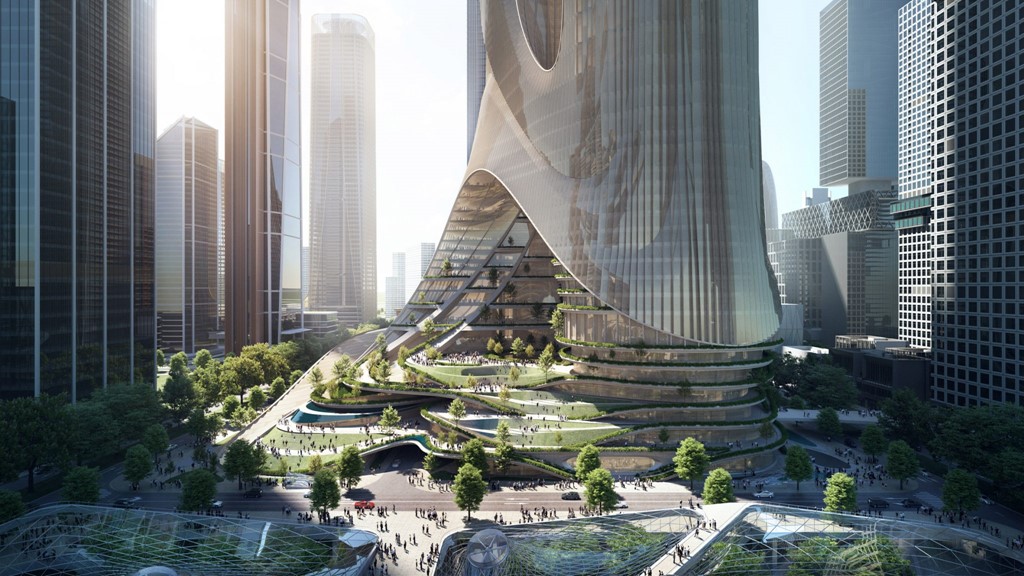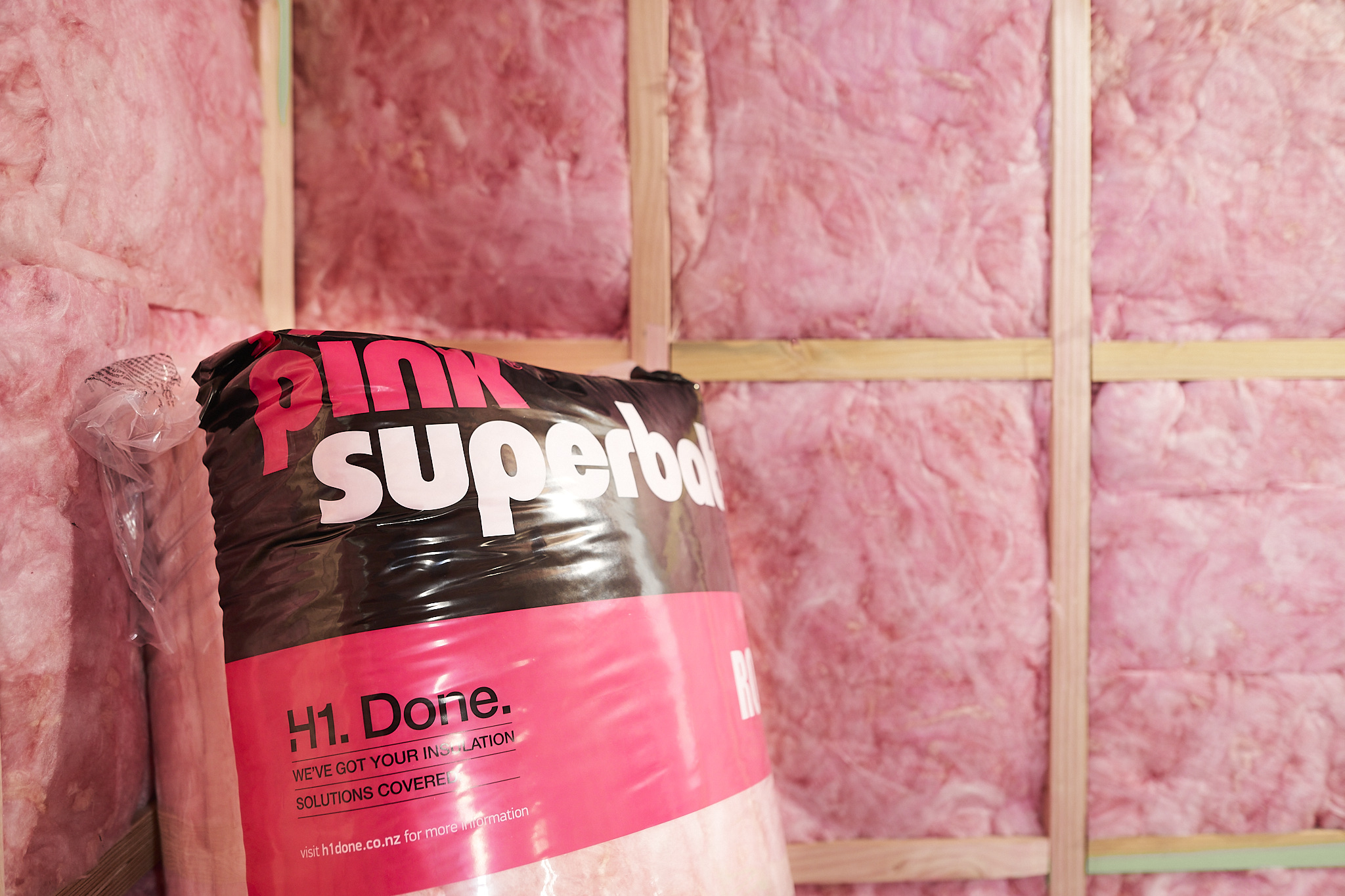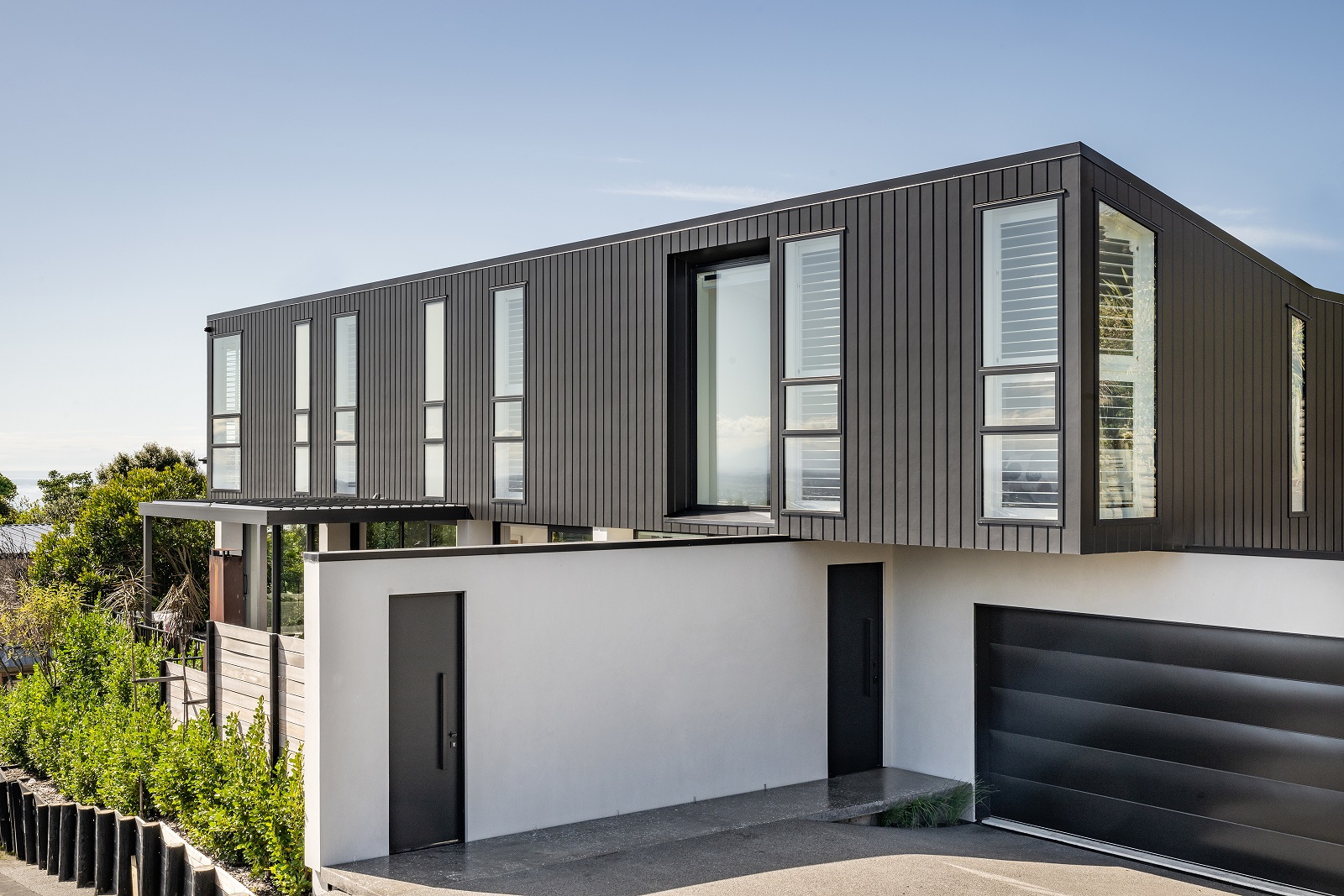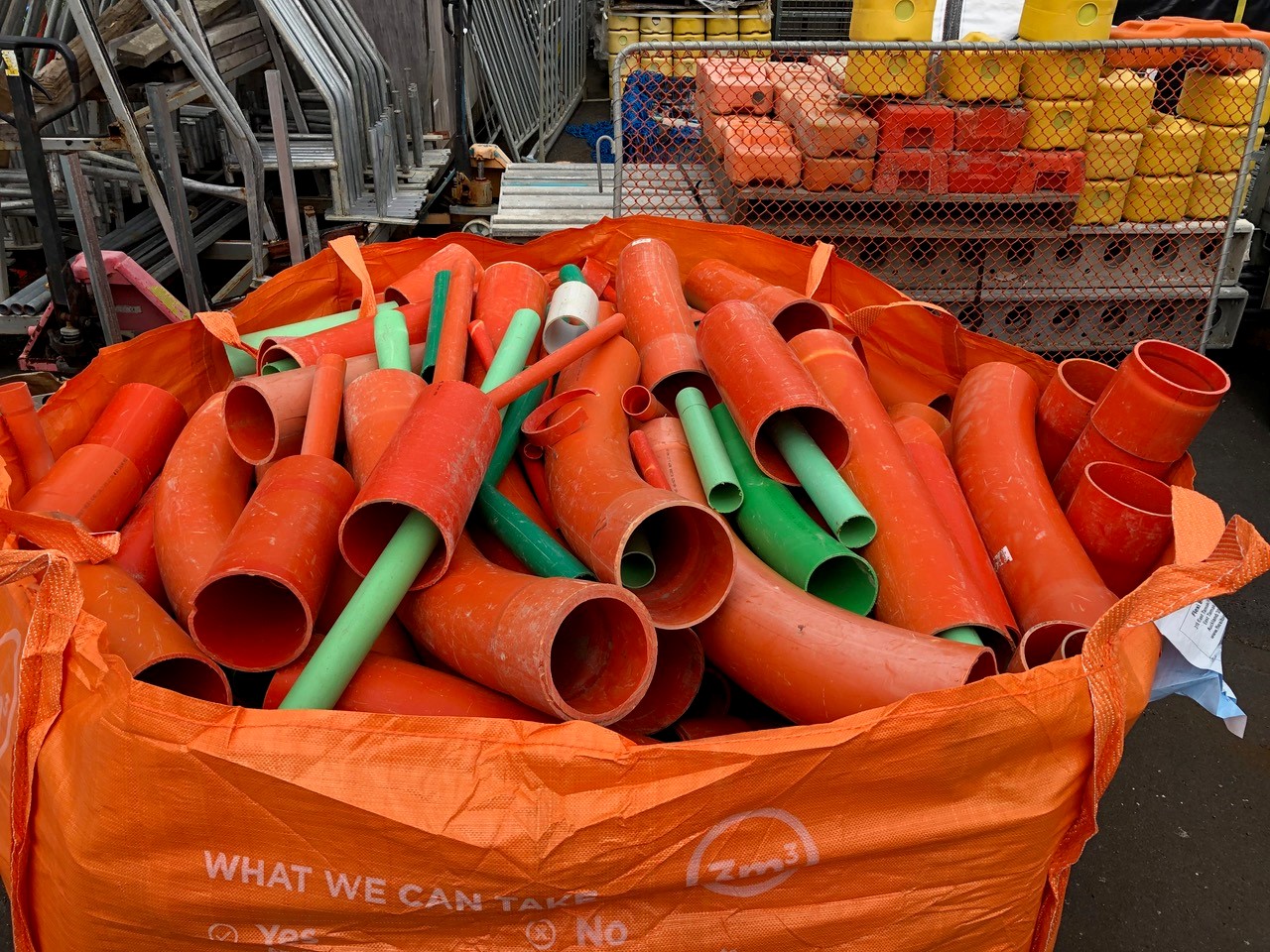Zaha Hadid Architects’ winning design for Tower C of the Shenzhen Bay Super Headquarters Base is considered to be an important landmark, further supporting Shenzhen’s reputation as a centre for technological innovation and advancement.
The multi-use development will provide workspaces for approximately 300,000 people while creating space to host international events such as conferences and exhibitions in addition to new public amenities, shopping, dining, and hotel accommodation.
A dramatic feature is the elegant opening at the base of the tower, symbolising the intention that the tower is for the city and not just for those using the workspaces. Curved floor areas connect the towers and provide more public programs, exterior renderings demonstrate lush green spaces that serve the building users but also help to connect to the surrounding parks and wetlands.

The tower’s parametric design creates an unbroken skin that acts as the façade for each individual tower and a connector for open space between them, which offers plentiful access to daylight and incredible views of the growing city below. A terraced landscape extending upwards within its two towers invites the public into the heart of the building, where cultural and leisure attractions are housed in sweeping bridges that tie the towers together and give panoramic views of the city.
The clever curtain-wall system also provides valuable services to help meet the building’s sustainability goals. Openings in the curtain wall allow for natural air to enter as needed, while shading devices help limit the light entering and heating the space past comfort levels - providing natural and hybrid ventilation with very effective environmental control for each floor.

Other green measures include recycling, solar energy and water collection systems, as well as photovoltaics to harvest solar energy for the district. Aquaponics gardens on all terraced levels will biologically filter contaminants from the local environment and low-volatile organic compound materials will be installed to minimise indoor pollutants and particulates. Prioritising pedestrians, the tower’s design also includes extensive bicycle parking and charging facilities.

The design of Tower C integrates the city and nature within its central green axis with the transit orientated development (TOD) of Shenzhen’s new spine, creating a ‘superscape’ within the Super Headquarters Base.
Informed by 3D modelling tools developed by ZHA that optimise efficiencies in architectural massing, orientation and facade-to-floor ratios, Tower C’s design is a multi-dimensional vertical city of two towers at nearly 400m, providing column-free naturally-lit office space, shopping, entertainment and dining amenities, together with a hotel, convention centre and cultural facilities with exhibition galleries.

Tower C is one of several buildings that Zaha Hadid Architects is currently developing in China under its new director Patrik Schumacher.
Elsewhere in Shenzhen, this includes four interconnected office towers for China's leading smartphone manufacturer OPPO and a pebble-shaped science museum in the city's new Guangming Science City.




